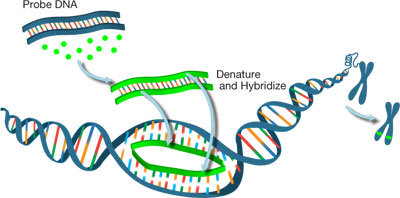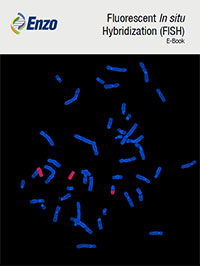Delivering superior results for better understanding of genetic disorders, cancers, and other diseases associated with chromosomal abnormalities
Cytogenetics is the study of chromosomal structure which is relied on to detect human developmental abnormalities at various phases including fetal and early childhood development all the way into adulthood. During fetal development, these include syndromes caused by missing or extra chromosomes (aneuploidies), as well as those caused by structural abnormalities in a chromosome such as unbalanced translocations and inversions. Cytogenetic microarray testing can be utilized during pregnancy to aid physicians in determining whether a fetus or newborn has chromosomal anomalies or developmental delays.
Fluorescence in-situ hybridization (FISH) is a type of molecular cytogenetic testing that is used to assess constitutional and acquired chromosomal aberrations by detecting the presence or absence (also referred to as copy number changes), and relative positioning of specific genes by fluorescence microscopy. It can be applied to metaphase chromosome preparations as well as interphase cell nuclei and methodologies can be modified by clinical labs. Microarray comparative genomic hybridization (aCGH) testing is utilized for the detection of genetic imbalances caused by gain or loss of chromosomal material (copy number changes), which may be beyond the detectable range of conventional cytogenetic and FISH techniques.
As pioneers in labeling and detection, we have used our superior labeling technology at Enzo to develop a broad range of molecular tools for the cytogenetics market, including FISH and array CGH solutions. These powerful tools can help provide a greater understanding of the role of chromosomal changes in genetic diseases and cancers.





















